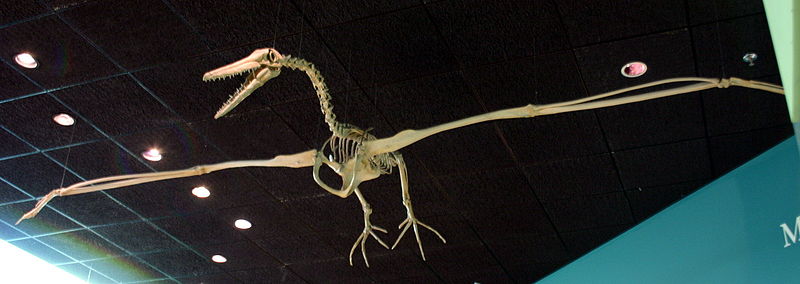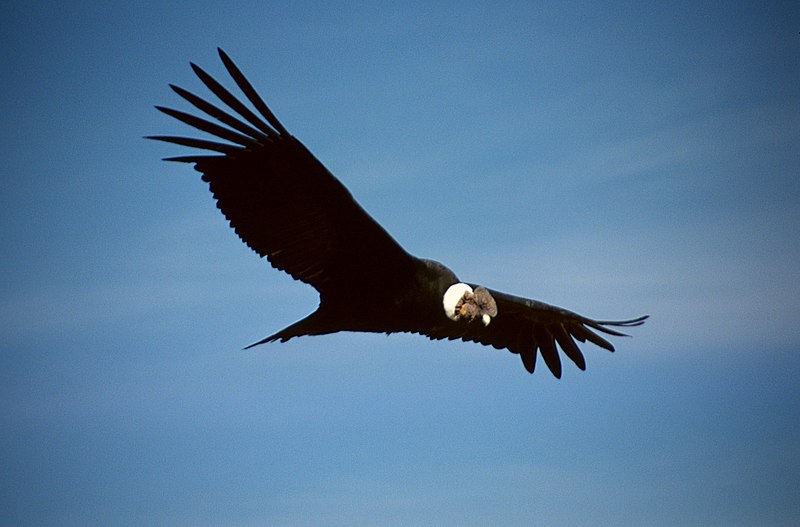 In terms of public interest, prehistoric birds generally stand in the shadows of the more dramatic reptilian dinosaurs. However, a discovery announced this week concerning a bird christened “Huge Pseudoteeth” (Pelagornis chilensis) was so startling that I thought I’d take a break from modern species and mention it here.
In terms of public interest, prehistoric birds generally stand in the shadows of the more dramatic reptilian dinosaurs. However, a discovery announced this week concerning a bird christened “Huge Pseudoteeth” (Pelagornis chilensis) was so startling that I thought I’d take a break from modern species and mention it here.
Writing in the current (September, 2010) issue of the Journal of Vertebrate Paleontology, researchers at Chile’s National Museum of Natural History reveal that “Huge Pseudoteeth’s” wingspan measured an incredible 17 feet – longer than that of any known bird, present or past. At an estimated 65 pounds, it also outweighed today’s heaviest flying bird, the 40 pound Kori Bustard.
Thrills for Modern and Ancient Birders
I’ve worked with California and Andean Condors, whose 11-12 foot wingspans are largest known today, and was shocked when I first came upon one with wings fully-spread (please see photo). I cannot imagine seeing wings that are half again as long! Yet, our ancestors may have been treated to just such a spectacle.
It seems that a huge relative of the recently-described giant inhabited North Africa along with Homo erectus and other early humans. If someone out for a stroll back then had looked up – and who would not, upon seeing a 17 foot-long shadow fall across their own – they would have been treated to the ultimate addition to anyone’s “birding life-list”!
Natural History
 “Huge Pseudoteeth” ruled the skies for approximately 50-60 million years (yes, a lot longer than we’ve been around!), then vanished about 2 million years ago. It was found in northern Chile (and perhaps elsewhere) and sported a long, slender beak lined with tooth-like projections.
“Huge Pseudoteeth” ruled the skies for approximately 50-60 million years (yes, a lot longer than we’ve been around!), then vanished about 2 million years ago. It was found in northern Chile (and perhaps elsewhere) and sported a long, slender beak lined with tooth-like projections.
The giant predator is believed to have soared over coastal seas in search of squid and fish. Paleontologists theorize that it glided just above the water’s surface with the lower bill submerged, snapping it shut when prey was contacted, much like the birds we know today as Skimmers.
Museum Exhibits
A reconstructed “Huge Pseudoteeth” will soon be on display at Frankfort, Germany’s Senckenberg Museum.
When in NYC, please take in the wonderful prehistoric bird display at the American Museum of Natural History; a wall-sized painting of prehistoric birds there has been mesmerizing me since childhood – don’t miss it!
Further Reading
Further information and several artists’ reconstructions may be found here.
Pelagornis miocaenus Skeleton image referenced from wikipedia and originally posted by Ryan Somma and Haplochromis
Andean Condor image referenced from wikipedia and originally posted by Colegota
 That Bird Blog – Bird Care and History for Pet Birds
That Bird Blog – Bird Care and History for Pet Birds

